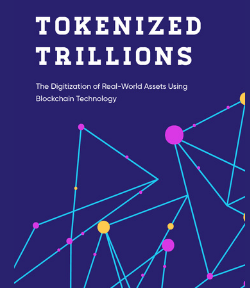
Automating Crypto Profits: Techniques for Algorithmic and Quantitative Trading
Mastering Crypto Trading: Advanced Algorithmic and Quantitative Strategies.
The rapid evolution of the cryptocurrency market has given rise to algorithmic and quantitative trading, where traders leverage mathematical models and algorithms to execute trades. This approach can offer significant advantages, including the ability to process vast amounts of data, execute trades at high speeds, and mitigate emotional biases. In this article, we’ll explore the fundamentals of algorithmic and quantitative crypto trading, including strategy development, implementation, and best practices.
Understanding Algorithmic and Quantitative Trading
Algorithmic Trading: Algorithmic trading involves using computer programs to execute trades based on predefined criteria. These algorithms can analyze market data, identify trading opportunities, and execute orders automatically.
Quantitative Trading: Quantitative trading uses mathematical and statistical models to identify trading opportunities. This approach relies heavily on data analysis, historical data patterns, and quantitative techniques to develop trading strategies.

Benefits:
- Speed: Algorithms can execute trades in milliseconds, taking advantage of short-term market inefficiencies.
- Precision: Automated trading reduces human error and allows for precise execution of trading strategies.
- Emotion-Free: Algorithms follow predefined rules, eliminating emotional decision-making.
2. Developing Algorithmic Trading Strategies
a. Data Collection and Analysis: The foundation of any algorithmic trading strategy is data. Collect historical price data, trading volumes, and other relevant metrics. Analyze this data to identify patterns and correlations that can inform your trading strategy.
b. Strategy Design: Design your trading strategy based on the insights gained from data analysis. Common types of algorithmic trading strategies include:
- Trend Following: Identifies and follows market trends, buying when prices are rising and selling when they are falling.
- Mean Reversion: Assumes that prices will revert to their mean over time, buying when prices are low and selling when they are high.
- Arbitrage: Exploits price differences of the same asset across different markets or exchanges.
- Market Making: Provides liquidity by placing both buy and sell orders, earning a profit from the bid-ask spread.
c. Backtesting: Before deploying your algorithm, backtest it using historical data to evaluate its performance. This helps to identify potential weaknesses and optimize the strategy.
Example: A trader develops a trend-following algorithm that buys Bitcoin when its price crosses above its 50-day moving average and sells when it crosses below. By backtesting this strategy with historical price data, the trader can assess its profitability and make necessary adjustments.
3. Implementing Algorithmic Trading Strategies
a. Choosing a Trading Platform: Select a trading platform that supports algorithmic trading. Popular platforms include:
- MetaTrader: Widely used for forex and crypto trading, offering robust algorithmic trading features.
- TradingView: Provides powerful charting tools and the ability to create and test trading algorithms using Pine Script.
- QuantConnect: An open-source platform that supports algorithm development, backtesting, and live trading.
b. Coding the Algorithm: Write the algorithm using a programming language such as Python, C++, or JavaScript. Python is particularly popular due to its extensive libraries for data analysis and machine learning.
c. Testing and Optimization: Thoroughly test the algorithm in a simulated environment to ensure it performs as expected. Optimize the parameters and refine the strategy based on the test results.
d. Deploying the Algorithm: Once the algorithm has been tested and optimized, deploy it on your chosen trading platform. Monitor its performance regularly and make adjustments as needed.
4. Quantitative Trading Techniques
a. Statistical Arbitrage: This technique involves identifying mispricings between correlated assets and exploiting these inefficiencies. It requires a strong understanding of statistical methods and correlation analysis.
b. Machine Learning Models: Machine learning can enhance quantitative trading by identifying complex patterns and making predictions based on large datasets. Techniques such as regression analysis, neural networks, and clustering can be applied to trading strategies.
Example: A trader uses a machine learning model to predict Bitcoin price movements based on historical data, social media sentiment, and macroeconomic indicators. The model’s predictions are then used to inform trading decisions.
c. Risk Management: Quantitative trading strategies must include robust risk management techniques. This involves setting stop-loss orders, diversifying the portfolio, and monitoring market conditions to mitigate potential losses.
5. Best Practices for Algorithmic and Quantitative Trading
a. Continuous Monitoring: Algorithmic trading requires constant monitoring to ensure the algorithm functions correctly and adapts to changing market conditions.
b. Regular Updates: Regularly update and refine the algorithm based on new data and market developments. Continuous improvement is key to maintaining a competitive edge.
c. Risk Management: Implement stringent risk management protocols to protect your capital. This includes setting position size limits, stop-loss orders, and maintaining a diversified portfolio.
d. Regulatory Compliance: Ensure your trading activities comply with relevant regulations. This includes understanding the legal implications of algorithmic trading in your jurisdiction.
e. Ethical Considerations: Be mindful of the ethical implications of algorithmic trading, such as market manipulation and fairness. Develop and deploy algorithms responsibly.
Conclusion
Algorithmic and quantitative trading offer powerful tools for navigating the complex and volatile cryptocurrency markets. By developing robust trading strategies, leveraging advanced technologies, and adhering to best practices, traders can enhance their performance and achieve consistent returns. As the crypto market continues to evolve, staying informed about the latest developments and continuously refining your strategies will be crucial for success in algorithmic and quantitative trading.






